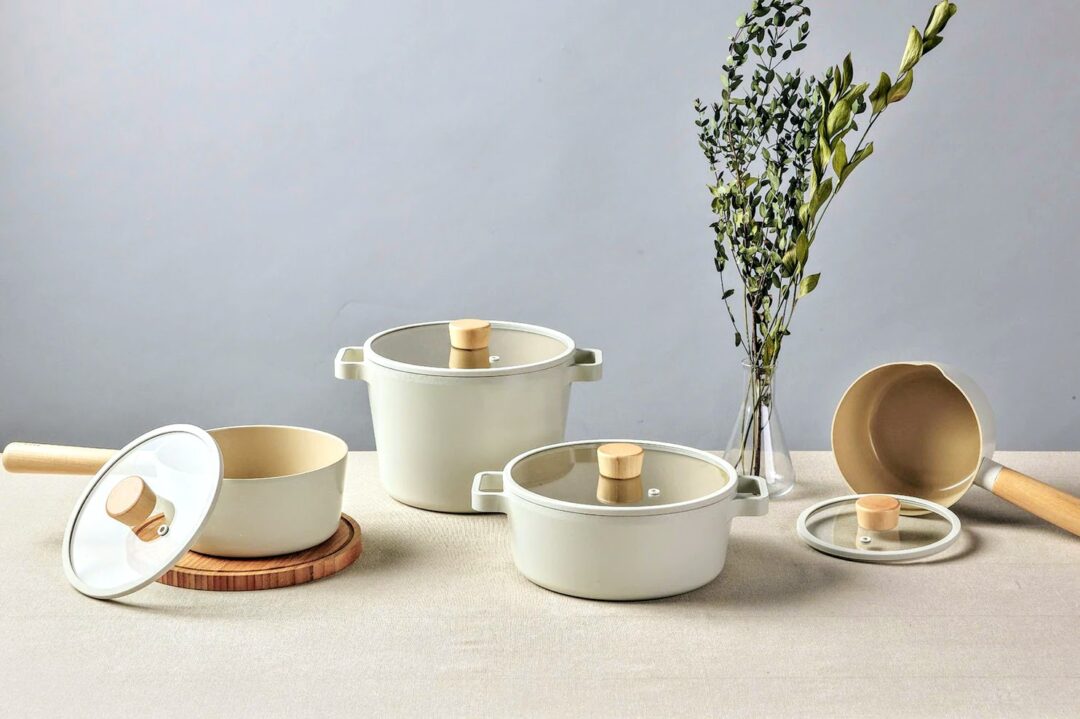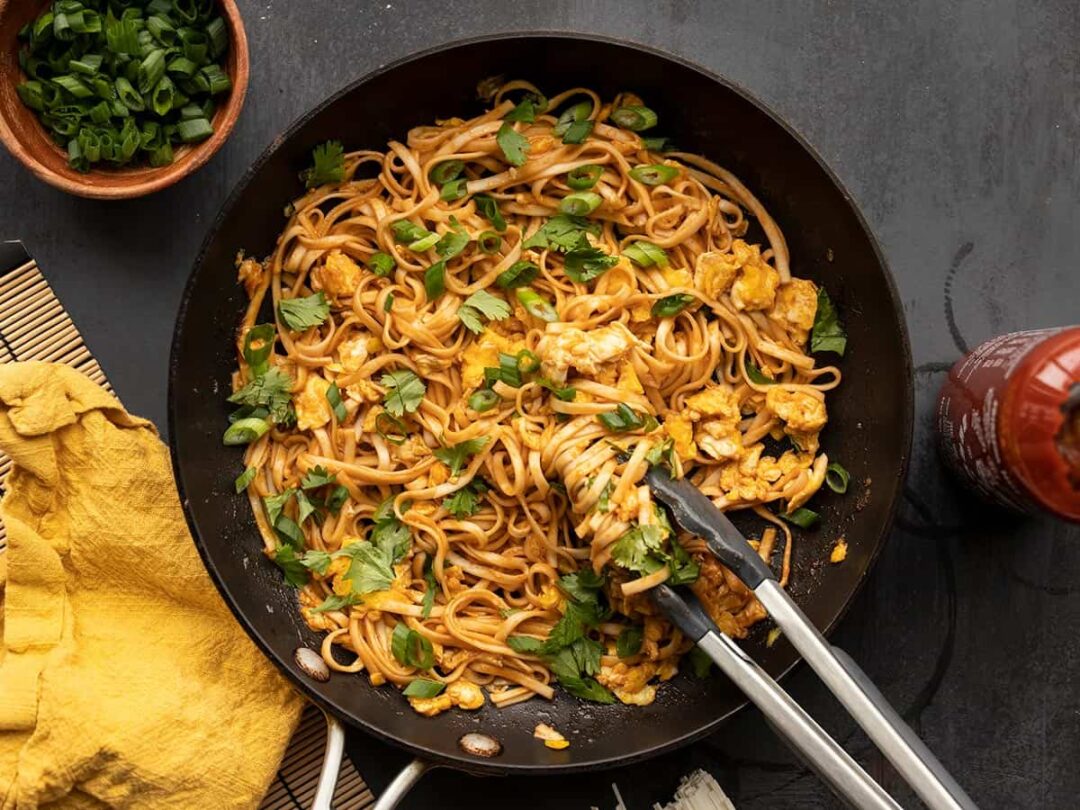Stock pot vs saucepan are common kitchen items in every kitchen. It is quite easy to distinguish between them at first glance. However, in order to know the differences between stock pot and saucepan and how to use them effectively, you should consult this article from Apronese.
What Is a Stock Pot?
Stock pots are large pots, usually the largest in the home kitchen. This wide, high-walled pot has a flat bottom, straight sides, a wide mouth as wide as the pot’s diameter, two handles on either side, and always comes with a lid.

Stock pots have a flat bottom and are very long and wide, allowing them to hold up from 6 liters to 24 liters. In most cases, the covers are wide enough to cover almost all of a large burner.

Some stock pots come with a steamer tray that fits inside the pot.

Stock pots are traditionally used to make broth. In addition to making soups, they are also often used to cook stews since they hold a lot of ingredients.
Other uses of a stockpot include cooking porridge, boiling, steaming, cooking pasta, cooking large foods like corn, and boiling water.
Materials used to make stock pots include stainless steel, aluminum, copper, and enamel on metal. More expensive classic pots have bottoms made of layers of metal to improve heat conduction.
What Is the Saucepan?
The saucepan is a small, round, deep kitchen pan with a relatively long handle, or one long handle and one short handle, and a lid that fits snugly into the hole at the top of the pan to permit steam to escape. Edges can be straight or flared and up to 3 inches deep or shallow.

As the name suggests, this type of pan was created in the 17th century exclusively for the purpose of cooking sauces. They are now used more flexibly.

You can prepare soups, stews, gravy, and foods like custards or potatoes in small amounts.

Liquids can be boiled quickly with a saucepan. These make them perfect for preparing dishes such as pasta, rice or quinoa more quickly than you could with a regular pot.

Blanching vegetables: Blanching vegetables involves cooking them quickly in salted water to bring out their vibrant flavors and colors.
The medium-small size of the saucepan is ideal for deep-frying a small amount of food. It will save you a lot of oil.
Saucepans can be made of various materials, including stainless steel, aluminum, copper, and enameled metals. They are suitable for use over flame or in an electric coil.
Saucepans are available in a variety of sizes, from 1 quart to 4 quarts.
Stock Pot Vs Saucepan: 5 Differences
It is not difficult to distinguish between a stock pot vs saucepan because you can see the difference immediately upon first glance.
However, in order for you to be able to fully grasp the differences between a stock pot vs saucepan, and so that you can effectively use them when cooking, apronese.com will review these 5 basic points:
Size and capacity
Stock pots are large with high walls and a wide mouth. Capacity ranges from 6 to 24 liters.
The saucepan has a small diameter, and its wall is thin. Capacity is from 1 to 4 quarts.


Handle
The stock pot has two symmetrical handles and a round mouth.
The saucepan has a long handle or one long handle and one short handle, and the mouth is either rounded or flared for ease of pouring.

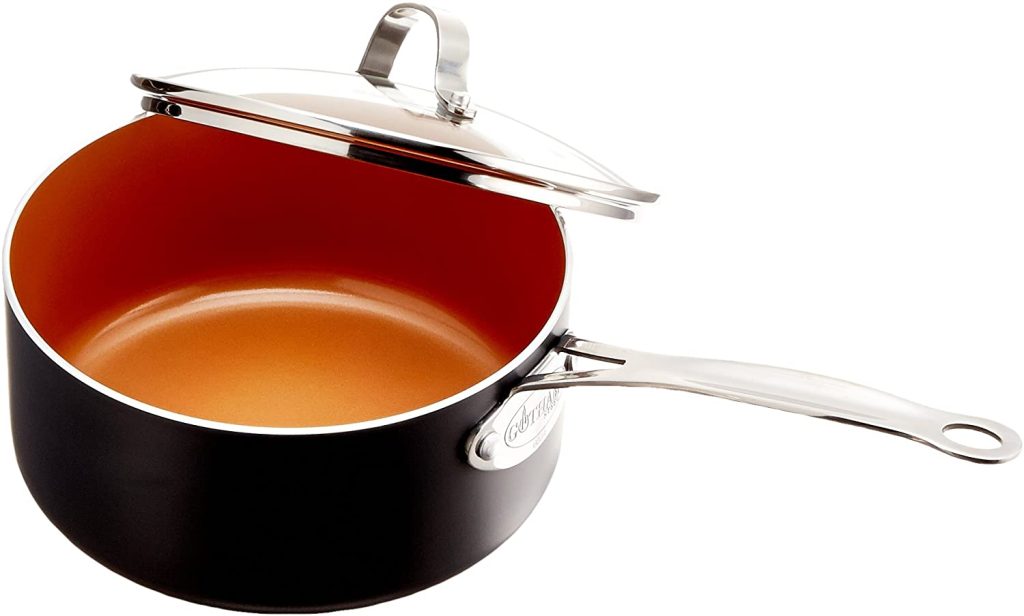
Multitasking ability
The stock pot is a type of pot that can only serve as a pot.
Saucepans are used as small pots, and sometimes they can also be used as frying pans.

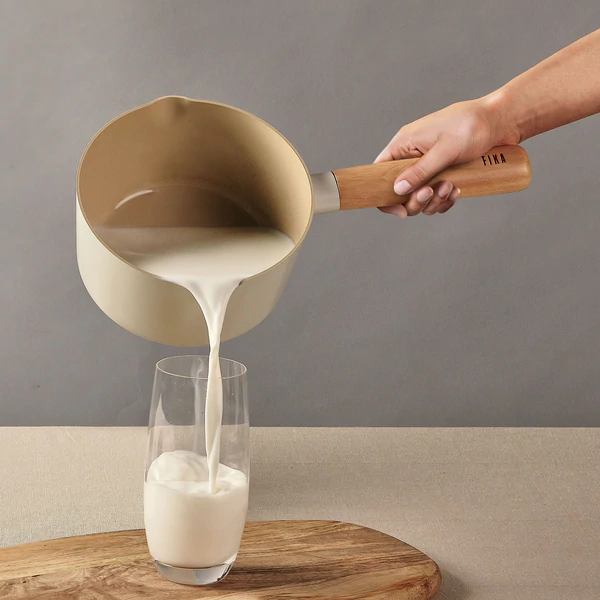
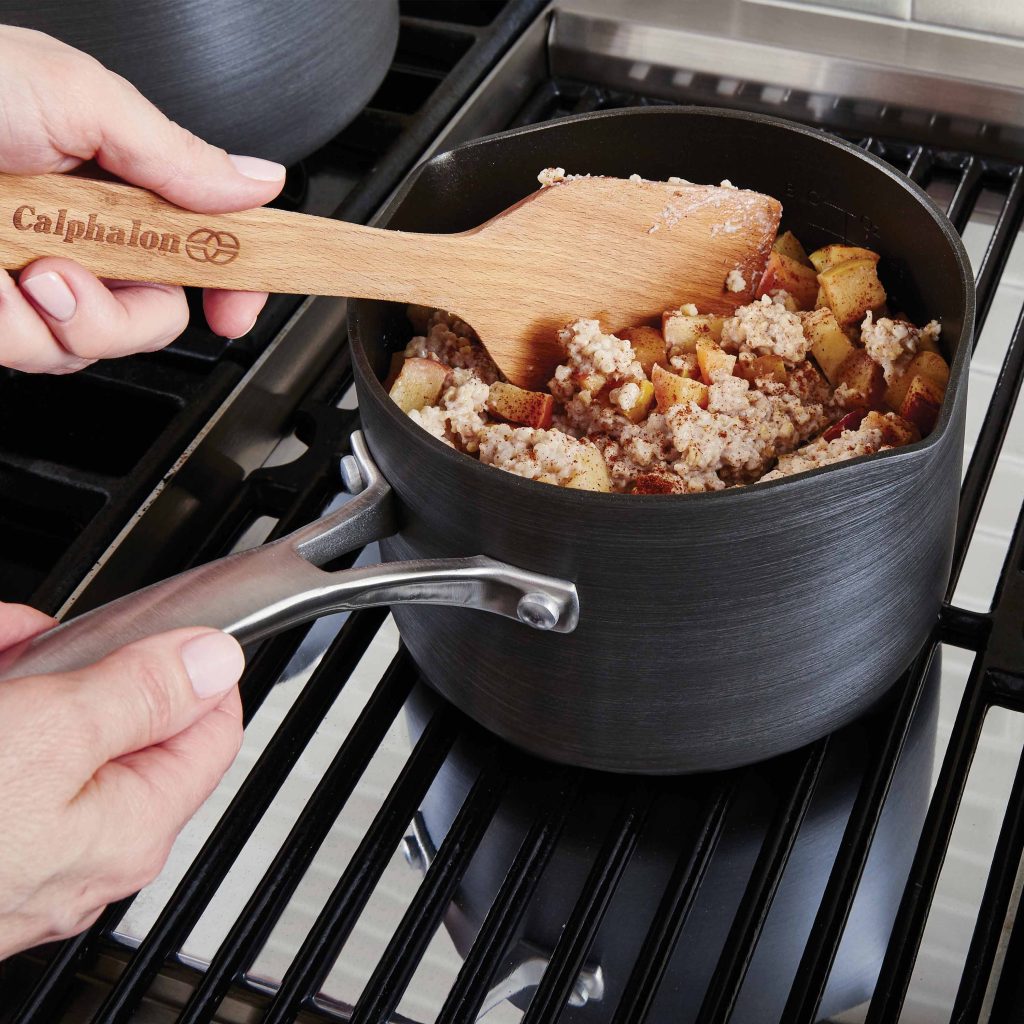

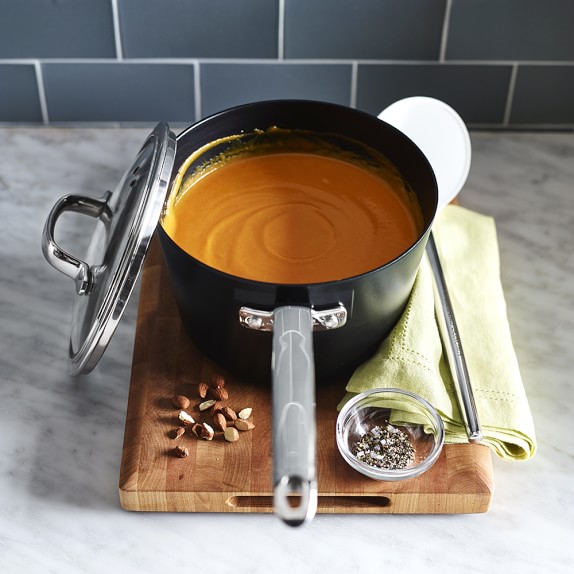
Ability to serve
Stock pots are used for cooking large quantities of food for many people at a time, such as parties or for many times.
In a saucepan, you cook for only a few people or for a baby.
Flexible
A stock pot is almost exclusively used in a home or industrial kitchen.
A saucepan is small and multi-purpose, so you can take it on a picnic.

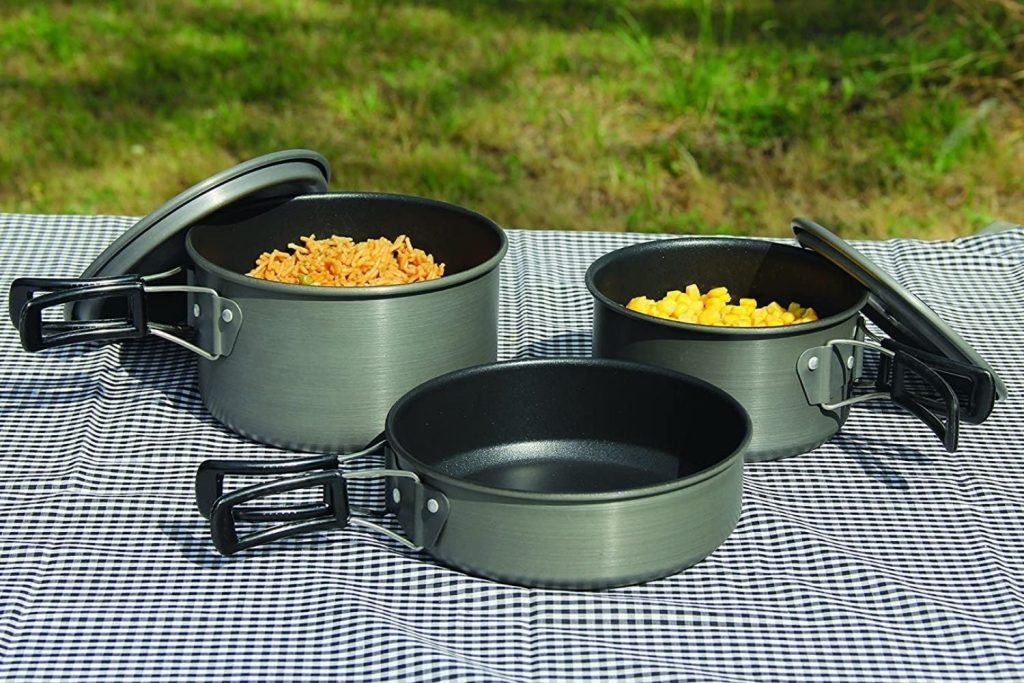
Can You Use a Stock Pot as a Saucepan?
The answer to the question is yes, but it shouldn’t. When you cook a small amount of food in a large pot, it will take a long time for them to heat up. This means that you have both wasted time cooking and washing the pot, as well as wasted fuel or electricity.
Furthermore, frying food in a pot is difficult because their walls are quite high, and you will waste a lot of oil.
Conversely, if you want, you can use the saucepan as a stock pot as long as you use less food to cook.
See more:
With the above differences between stock pot vs saucepan, Apronese team hopes you gained more useful information about kitchen utensils, helping you to use them most effectively.
If you have any other information, please leave a comment below and don’t forget to follow apronese.com in the future.

